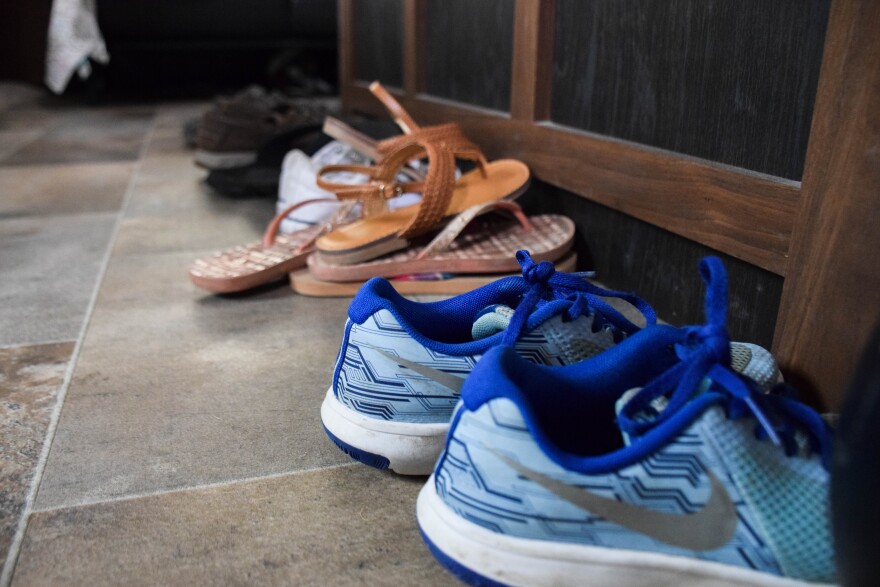Days away from the official start of the Atlantic hurricane season and days after subtropical storm Alberto made landfall in Florida, Everglades City was still trying to piece itself back together, more than eight months after Hurricane Irma.

We first met Jordan Mayberry a week after the storm– on the steps of her ruined home.
“We just finished it exactly the way we wanted it," Mayberry said. "We just put up the fence. We just put in a new pool and the garage and the backsplash and the tiles, every single thing you can walk into the house and see that’s visible to the eye.”
Mayberry and her husband worked paycheck to paycheck for three years to pay for the renovations to their dream home – only to have Irma’s 10-foot storm surge wash it all away.
The 31-year-old mother of two stood in her muddy yard, surrounded by pieces of her new fence, and said, despite everything, she was grateful.
“We lost our homes, but we found humanity," Mayberry said. "Everglades City is a very close community."
RELATED: Gov. Scott Visits Everglades City, Still Without Power

Now, more than eight months after the devastation, Mayberry says that community – that "family" – is how they’ve gotten through it. She says they’re “lucky” that Everglades City has allowed its residents to live in trailers on their properties.
“We are in our camper, and this is post-Irma," Mayberry said. "Our camper’s placed in our backyard."

She pauses to wipe away her tears, apologizing.
"I’m sorry," she says, sniffling. "Sometimes, it’s just hard to talk about.”
The family of four is still in this camper because they’re still waiting for their homeowner’s insurance to settle, and they only got $1,500 from the Federal Emergency Management Agency.
Mayberry hangs her head at the small kitchen table in the trailer. Behind her, there’s the sofa bed her 12- and 8-year-old daughters share. It’s covered in stuffed animals. Mayberry says that’s hardly a quarter of the girls’ collection; the rest is in the garage with the refrigerator and washing machine and dryer.
On the arms of the couch, which are now makeshift nightstands, the eldest has a collection of books, and the second-grader has a pink cardboard castle she’s constructed to hold her school supplies.

“I’m crying, but they’ve actually been doing great," Mayberry says. "I think I worry about them more than I need to. You know, as a mom, you always just worry about your kids, but I mean, they’ve been doing great in school.”
She says, it’s at Everglades City School where, just after the hurricane and in the weeks that followed, the community rallied. Faculty and staff invited everybody in town to campus to grill burgers and hot dogs.
Mayberry says one of her daughter’s teachers even brought over cleaning supplies to try to salvage the house that had filled with water up to the electrical outlets, and with the supplies, she also brought a cooler full of sandwiches and cold drinks.

The small act of kindness still brings tears to Mayberry’s eyes, and she says, it’s one of the reasons her family never thought twice about staying after Irma.
“You don’t get that in a big town. You kind of get lost in, you know, the numbers," Mayberry said. "People say, ‘Oh, you live out in Everglades City? Why would you want to live there?’ And, I say, ‘You just, you can’t explain it. You’d have to live it to know it.’”
FEMA spokesman John Mills put it this way last week. He said, perhaps just as important as preparing yourself for hurricane season, is preparing your community.
FEMA is often the last responders. It took the agency five days to get to Everglades City after Irma – five days of flood waters and no electricity, cell service or running water.
Your neighbors are often the first responders, FEMA says, and that could not be more true of Everglades City – then, and now.



